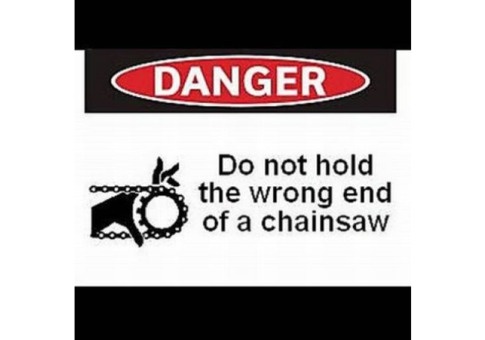Every now and again, a human being just needs to rant. Possibly to someone in particular. Likely to anyone who will listen. So, thank you, in advance, for listening.

You walk into a dispensary and take stock of the product menu. The product names all sound cool, and you know that nearly every product will contain tetrahydrocannabinol (THC). What else can you say about the product label, not from sativa/indica vantage points, but from real data that conveys chemical information?

Most often, labels contain the potency of a handful of cannabinoids present in higher concentrations. Cannabis industry regulators are often focused on THC. Besides articles regarding tourists woofing down an edible, I can’t remember reading doom scenarios rooted in reality regarding THC (if you have, send them). Edibles, some say, might target children. But, of course, there’s sick children being effectively dosed with THC, perhaps via said edibles. There’s precautions to consider before ingesting larger quantities of THC (start low, go slow), but you can’t overdose.
So, label THC potency? Yes. But obsess over it? Seems pointless when there’s so many other contaminants to be concerned over. Or there’s other useful molecules that help define a consumer’s individual experience. So, we’ll migrate there.
To date, only Nevada and Pennsylvania require terpene analyses and subsequent product labeling. Multiple studies have shown that terpenes differentiate cannabis cultivars, not major cannabinoids (except for THCA versus CBDA dominant chemovars). [1-4] It’s also been illustrated that consumers like to shop using their nose. [5] Although regulators in Pennsylvania currently forbid this organoleptic practice, at least you can smell it after you make your purchase and compare the fragrance with the numbers provided on the label.
There’re more pages of scientific literature regarding the medical studies of terpenes that you could read in a lifetime. Humans, like insects, love terpenes. A scent from a flower, or a perfume, or a beer can invigorate the senses, can alter brain waves, and can transport one through space-time. Terpenes should be included on all product labels, required or not.
It might be troublesome to learn that there are “acceptable” levels of pesticides, or residual solvents, or heavy metals. Different states have significantly variable thresholds of permissible levels of contaminants. [6,7] This isn’t just in the cannabis industry, however. There are regulations regarding how much contamination a food product can have before it’s considered legally inedible.
Often, we blindly trust that if a product is on a store’s shelves, it’s safe. But when you read that California requires less than 890 parts per million (ppm) toluene, and Alaska requires less than 1 ppm toluene, it should cause you to wonder about why there are differences. Does Alaska have data that conveys something about product safety with higher levels of the contaminant that California doesn’t? If no, then how have these values been determined? Is Alaska just being ultra-conservative or California too liberal? Wouldn’t each state be working from the same Safety Data Sheets?
Every one of these questions exemplifies why knowing specifically how much of these contaminants are in a cannabis product would be a nice luxury to have, whether of a chemical or microbial nature.
Seven months ago, Extraction Magazine published an article regarding the labeling of lipid contents in cannabis products. Over the past few weeks, lots of gloom has surrounded vaping nicotine- and cannabis-based products, and hypothesized links to lung-related illnesses and deaths. How often have you seen an ingredient list on any cannabis vape oil? Ever? Do you know what your vape oil is cut with? Does the dispensary selling it? This information seems more critical now than ever.
Labeling is chaotic in the hemp industry, but at least some, hopefully most, of the ingredients in a tincture or oil are listed. So, why have product manufacturers decided to not label cannabis products with anything other than information-less marketing language for product diversification and typically, THC and CBD content?
You deserve to have as much information surrounding your medicine as possible. Every product lot going to market is required to be tested at a 3rd party lab. These labs provide the manufacturer with certificates of analysis (CoAs). And while this information won’t fit on a product label, a scannable QR (quick response) code would be an elegant way of demonstrating product traceability, translucency, and trustworthiness from creator to consumer.
We’re all scything the path forward together. As science catches up to sales and marketing, we’ll need to modify our philosophies according to the data, just like anything else in life. We need to exemplify respect for the plants and the patients in perpetuity.
Recap: List terpenes, provide code linked to CoA, read through new-found data, trust or distrust product, smile or not.
This specific rant is over. Others will continue. Thank you once again.
References
- [1] Fischedick, J. and Hazekamp, A. “Cannabis-From Cultivar to Chemovar.” Drug Test Anal., 2012, Vol. 4(7-8), pp. 660-7. [Journal Impact Factor = 2.799; cited by 65]
- [2] Hazekamp, A., et al., “Cannabis: From Cultivar to Chemovar II—A Metabolomics Approach to Cannabis Classification.” Cannabis and Cannabinoid Research, 2016, Vol. 1(1), pp. 202-215. [Journal Impact Factor = N/A; cited by 31]
- [3] Orser C. et al. “Terpenoid chemoprofiles distinguish drug-type Cannabis sativa L. cultivars in Nevada.” Nat Prod Chem Res., 2018, Volume 6, pp. 304. [journal impact factor = N/A; cited by 5]
- [4] Reimann-Philipp, U. et al. “Cannabis Chemovar Nomenclature Misrepresents Chemical and Genetic Diversity; Survey of Variations in Chemical Profiles and Genetic Markers in Nevada Medical Cannabis Samples.” Cannabis and Cannabinoid Research, 2019, open access. [journal impact factor = N/A; cited by 2]
- [5] Sexton, M., et al. “A Cross-Sectional Survey of Medical Cannabis Users: Patterns of Use and Perceived Efficacy.” Cannabis and Cannabinoid Research, 2016, Volume 1, pp. 131-138. [journal impact factor: N/A; cited by 48]
- [6] Lincoln, G. “There’s More Than One Way to Write a Regulation.” Terpenes & Testing Magazine, Sept-Oct 2018.
- [7] Ross, K. “Relevant Best Practices for Compliance-based Microbial Testing in Cannabis Labs.” Terpenes & Testing Magazine, Nov-Dec 2018.
Image Credit: Forbes








